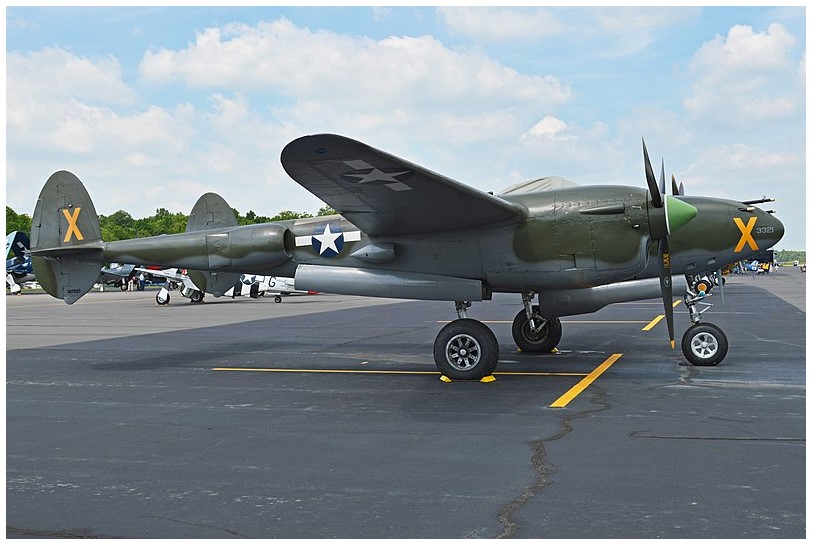The Lockheed XP-58 Chain Lightning was an American long-range fighter developed during the Second World War. The XP-58 was the largest version of the series of aircraft based on the P-38 which would be later sold by Lockheed to England and France. After several modifications in armaments and power plant configurations, the XP-58 prototype was rolled out in 1943. It made its first flight in June 1944 almost after 4 years its designing started. The XP-58 program was finally cancelled after completing 25 test flights in 1945 not only because of its several technical problems, but also USAAF had no further needs for the bomber destroyers.
Originally two designs were made. Both using the Continental IV-1440 engines. One would be a single seat aircraft with one 20 mm (.79 in) cannon and four .50 in (12.7 mm) machine guns. The second had two-seats aircraft with the addition of a flexible .50 in (12.7 mm) gun at the end of each tail boom. The system had the pilot at front, operating the aircraft and firing an impressive which later evolved into an array of 4 x 37mm cannons. At the rear end, the gunner could operate two rear-facing .50 caliber heavy machine guns installed in the booms especially designed to check any rear-approaching enemies. Original design used untested power plants designed by the Continental company. Later, a Pratt & Whitney power plant was selected to replace the Continental design. Ultimately the Wright R-2160 Tornado radials were fitted into their airframe. In spite of being a much powerful engine, the Tornado’s inclusion into the design made the Lockheed engineers to modify almost every internal mechanism. As a result, XP-58 got further delayed. Armament wise, the system was capable enough in taking out a bomber or fighter in one shot. The issue of cabin pressurization was addressed, that helped its cause of a high altitude aircraft.
Further developmental and production delays doomed the Tornado power plants. Ultimately low-powered Allison radials were used instead. The system proved quite stable in handling. Still, the complicated internal workings, delayed production and elongated development cycle and the propensity of the turbo superchargers led to its demise in 1945.
Specifications
| Crew: | 2 (Pilot and Gunner) |
| Length: | 49.31ft (15.03m) |
| Width: | 70.01ft (21.34m) |
| Height: | 13.78ft (4.20m) |
| Wing area: | 600 ft² (56 m²) |
| Max Speed: | 435mph (700kmh; 378kts) |
| Max Range: | 1,400miles (2,253km) |
| Rate-of-Climb: | 2,660ft/min (811m/min) |
| Ceiling: | 40,000ft (12,192m; 7.6miles) |
| Empty weight: | 21,624 lb (9,808 kg) |
| Max takeoff weight: | 39,192 lb (17,777 kg) |
| Hard points: | 0 |
| Empty Weight: | 31,625lbs (14,345kg) |
| Engine(s): | 2 x Allison V-3420 engines generating 3,000hp each. |
| Power/mass: | 0.15 hp/lb (0.12 kW/kg) |
| Armament: | 4 x 37 mm (1.46 in) cannon in an articulated nose; 4 x .50 in (12.7 mm) machine guns in two remotely controlled flexible turrets in the rear. 1 x 75 mm (2.95 in) cannon and 2 x .50 in (12.7 mm) machine guns in the nose; 4 x .50 in (12.7 mm) machine guns in two remotely controlled flexible turrets in the rear. |
